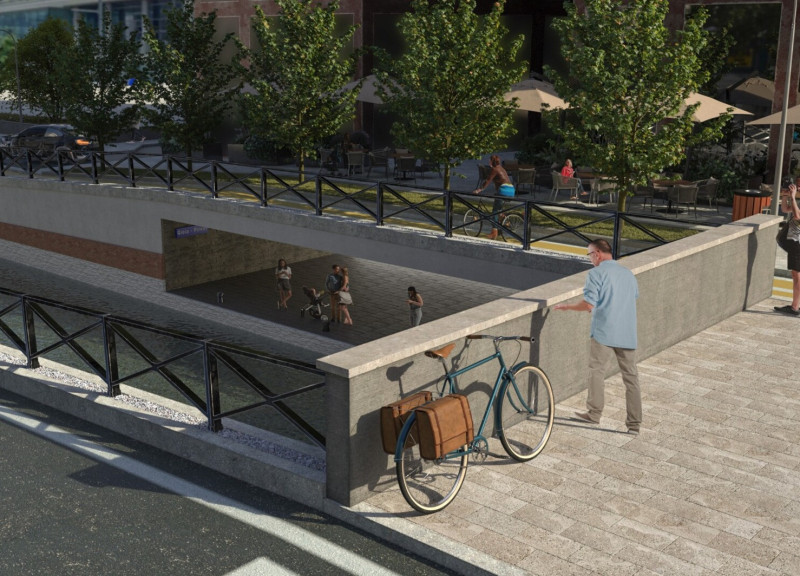5 key facts about this project
The reopening of Milan's canals aims to blend the historic aspects of the city with modern urban needs. The project's setting in the heart of Milan highlights its significance, as these canals have played an important part in the city’s development over the years. The overall design concept focuses on revealing and honoring the historical structures while enhancing accessibility and sustainability.
Historical Preservation
At the center of the design is a commitment to preserving historical elements that tell the story of Milan's waterways. This includes lateral walls, bridges, and navigation locks that have remained underground for decades. Historical photos from the 20th century show that many of these structures are still intact, providing an opportunity for restoration. The project emphasizes recovering and repositioning these elements, which reflect the cultural heritage of the city. Coordination with the Italian governmental authority will help ensure that these artifacts are preserved according to legal and historical standards.
Environmental Integration
Sustainability is a key focus of the project, which incorporates environmental strategies into its overall framework. New district heating and cooling networks will be installed alongside the canals, promoting energy-efficient solutions for the urban area. The implementation of new sewer lines that incorporate heat recovery systems demonstrates a commitment to modern infrastructure while respecting the historical context. Additionally, the design proposes collecting clear water, such as rainwater and groundwater, to be returned to the canal, ensuring effective water management and promoting ecological responsibility.
Urban Connectivity
The design is divided into two main subprojects. Subproject A concentrates on the Martesana Canal, while Subproject B addresses the inner canals of central Milan. The focus on Subproject A can lead to rapid implementation since it already has an established water supply and transportation routes. In contrast, Subproject B presents more challenges in planning and financing, requiring careful consideration. Together, these two phases aim to enhance connections within the urban landscape, allowing for easier access to the canals and reinforcing their role in the city's transportation network.
Community Engagement
Engaging the surrounding community plays an important role in the project. The design encourages properties adjacent to the canals to partake as primary users of new utilities that will be created. This not only fosters a sense of community ownership but also enhances the public spaces along the canals. As the waterways are reopened, careful integration will ensure that their banks become vibrant areas where people can gather and interact, thereby linking the historical significance of the canals with everyday urban life.
With the reopening of the canals, elements like restored navigation locks and bridges will function as connecting points between past and present. They will serve practical purposes while also reminding residents and visitors of Milan's rich historical journey.






















































